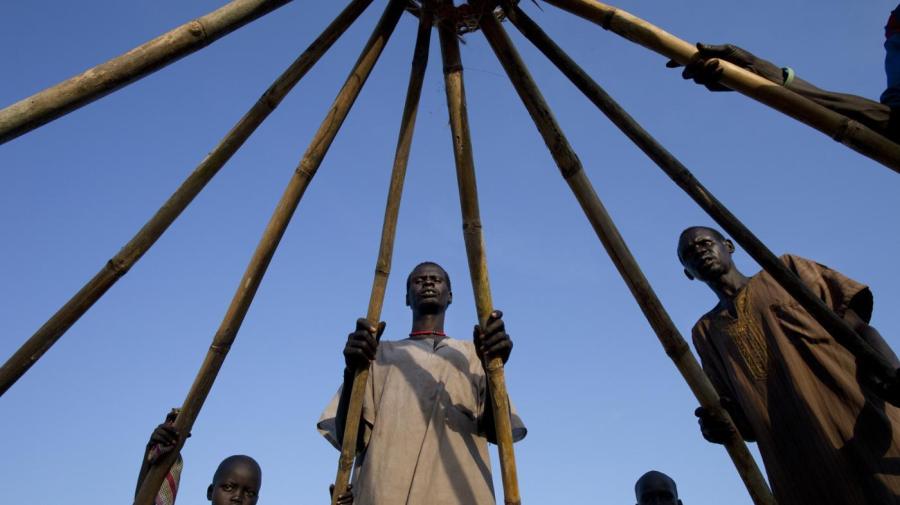What Are Traditional African Huts Made From?

Beehive dwellings are widely used traditional huts built out of painted mud or a wooden framework and covered with layers of thatched grass for roofing. Zulu people are one of the largest producers of these huts, which are typically made using wooden frames, while Xhosa huts are made using mud. These traditional huts are most often laid out in a circular position to form a community.
Zulu huts employ the use of black wattle saplings to create their structure, natal fig bark as tying materials and rock alder to create a central pole support. Dried mud is the base of the similarly designed Xhosa huts, which are typically painted. Floors are traditionally made of dried and polished cow dung.
The Venda people build circular huts that are surrounded by deep verandas that have plaster ceilings. Similar to the huts created by the Tswana, Pedi and Tsonga people, the ceilings of these huts are most often painted with concentric patterns called “the eye of the lion.” The Sotho people build a similar hut with the inclusion of a snout-like entrance. Ndebele villages, also in South Africa, are also made of similar huts, but are differentiated by their unique polychromatic wall art.





